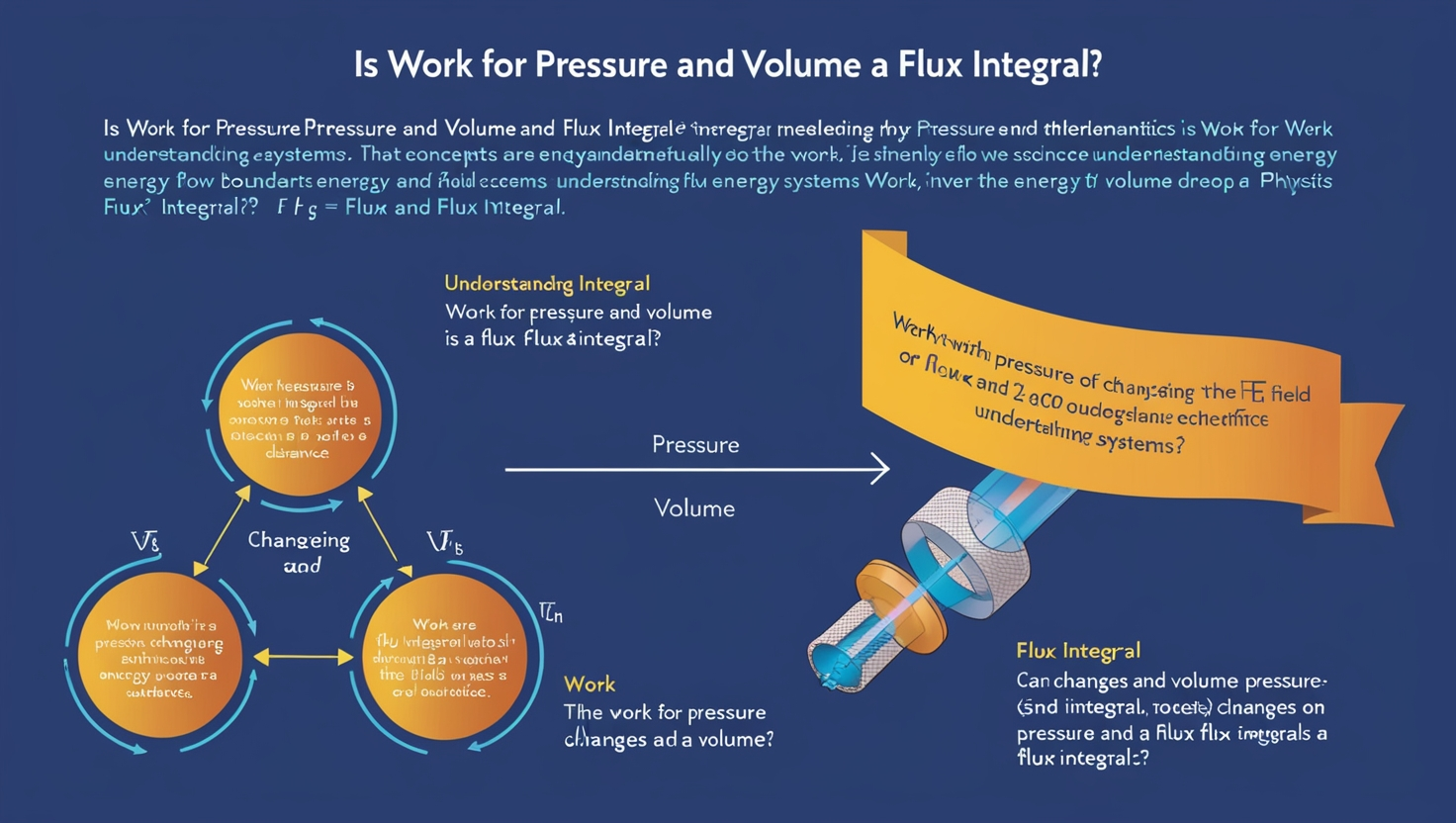Is work for pressure and volume a flux integral? This fundamental question often arises in thermodynamics and fluid mechanics. Understanding how work relates to pressure, volume, and flux integrals is crucial for students, engineers, and scientists. This article delves deep into these concepts, breaking down complex ideas into simple, clear explanations.
Let’s explore whether work for pressure and volume is a flux integral, how it applies in real-life scenarios, and why it’s essential to understanding energy systems.
Understanding Work in Physics
To answer the question—is work for pressure and volume a flux integral?—we must first understand what “work” means in physics. Work involves transferring energy through force acting over a distance. In the context of gases, work often consists in changing pressure and volume.
What is a Flux Integral?
A flux integral calculates the flow of a field (like fluid or gas) through a surface. In mathematics and physics, flux integrals are vital in understanding how quantities like heat, mass, or electric fields pass through boundaries. But is work for pressure and volume a flux integral? Let’s explore this connection.
Connecting Flux Integrals with Work
At its core, pressure work relates to how energy moves through surfaces and boundaries—concepts closely tied to flux integrals. When pressure changes within a volume, the “flow” of this energy can be expressed through integrals, especially in dynamic systems.
Mathematical Representation
Mathematically, the work done during a volume change (at constant pressure) is expressed as:
W=PΔVW = P \Delta VW=PΔV
But in more complex scenarios, integrating pressure over volume changes involves integrals:
W=∫P dVW = \int P \, dVW=∫PdV
Here, we see the integral form of work—but is work for pressure and volume a flux integral? Not exactly in this simple form, but let’s keep building.
Work and Surface Integrals
Surface integrals describe flux through surfaces. In systems with varying pressure distributions, calculating the network might involve integrating pressure over a moving boundary, similar to flux integrals. So, there’s a conceptual overlap.
Thermodynamic Applications
In thermodynamics, understanding how energy transfers during processes involving gases is critical. Whether in engines or refrigeration cycles, is work for pressure and volume a flux integral? Often, yes—especially when dealing with flows through boundaries.
Real-World Examples
Consider a steam engine. Steam expands, pushing pistons. Calculating the total work involves understanding how pressure changes over the engine’s internal volume, similar to evaluating flux integrals in dynamic fields.
Why Flux Matters
Flux integrals help quantify how much “stuff” passes through a surface. In pressure-volume work, we assess how energy moves through system boundaries—essentially tracking “energy flux.” Thus, is work for pressure and volume a flux integral? Conceptually, very much so!
Visualizing the Concept
Imagine gas molecules escaping a balloon. The pressure difference causes expansion (work). Evaluating this process can involve flux-like calculations. Hence, the answer to is work for pressure and volume a flux integral? depends on the context.
Work in Closed vs. Open Systems
In closed systems, work often simplifies to basic integrals. However, work calculations in open systems (like turbines) resemble flux integrals, measuring energy flow across boundaries.
Flux Integral and Energy Conservation
Flux integrals tie directly into conservation laws. When energy crosses boundaries (as with pressure-volume work), flux integrals help ensure all energy transfers are accounted for, reinforcing their connection.
Practical Implications
For engineers, knowing whether is work for pressure and volume a flux integral critical. Designing efficient engines or HVAC systems requires understanding energy fluxes and work calculations in tandem.
Misconceptions and Clarifications
Some confuse flux integrals with surface areas alone. But is work for pressure and volume a flux integral? Involves more: it’s about energy flow, not just boundaries. Understanding this prevents common mistakes in calculations.
Conclusion
In summary, is work for pressure and volume a flux integral? In many dynamic systems, yes. While essential pressure-volume work may not always involve flux integrals, complex, real-world applications—especially those involving energy transfer across boundaries—do. Understanding this connection enhances our grasp of physics and engineering.
FAQs
Q1: What is a flux integral?
A flux integral calculates the flow of a field (like fluid or energy) through a surface.
Q2: How is work related to pressure and volume?
Work is done when a gas expands or compresses, changing its volume under pressure.
Q3: Is calculating work always a flux integral?
Only sometimes, but it often is in dynamic systems involving boundary energy flow.
Q4: Why are flux integrals important in engineering?
They help quantify energy, mass, or heat transfer across boundaries, which is crucial for designing systems.
Q5: Can you simplify the relationship?
Think of flux integrals as tracking “flows” through surfaces; pressure-volume work tracks energy flow similarly.

